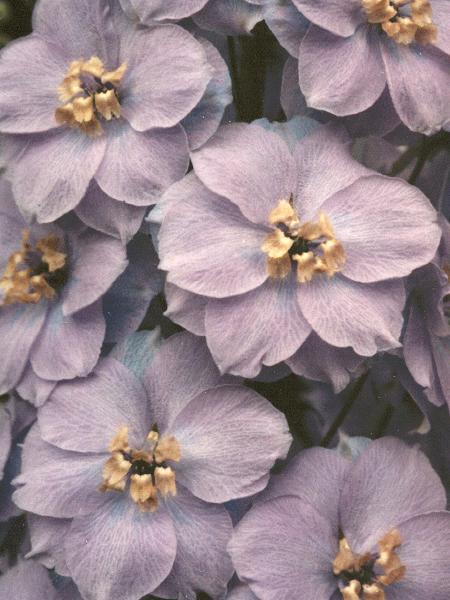
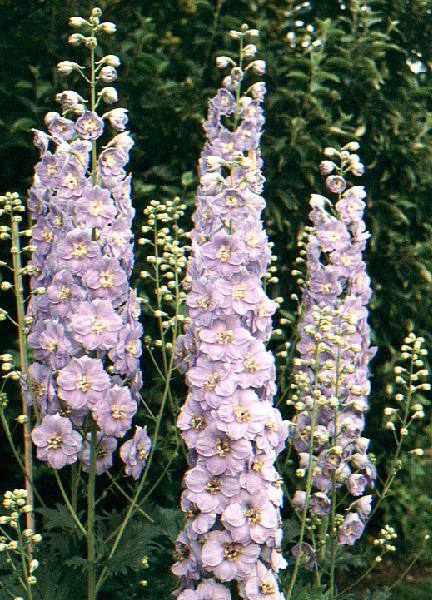
| Return to Front cover | Return to Home Page |
| Emily Hawkins | Galileo | Giotto | Summerfield Viking |
 |
 |
| 'Emily Hawkins' was the
first delphinium to which we gave a name. The plant was
one of a batch of seedlings from a cross between an un-named
seedling and 'Olive Poppleton', a white with a light
brown eye. In 1978, this plant produced blooms good
enough to win prizes in the Novice Classes when we
competed in the Delphinium Society's Show for the first
time. The well-formed florets and regular packing of the
blooms attracted attention and we were encouraged to
submit the plant for trial at the Royal Horticultural
Society's Garden at Wisley. It grew very well there and
gained an Award. This meant that seedling GXO3 had to be
given a name and 'Emily Hawkins' was chosen in memory of
Shirley's mother who loved our flowers. 'Emily Hawkins' proved easy to propagate from cuttings and was soon widely distributed. Some growers dispute its ability to produce top quality exhibition blooms but others have shown that fine blooms can be obtained. It tends to flower quite early in the season like its parent 'Olive Poppleton', although the bottom florets of a bloom last better than those of 'Olive'. A problem for exhibitors is that florets can tend to 'look downwards' if blooms are kept in dull light before staging at the Show. The colour of the flowers is somewhat variable. Early season flowers, especially when forced under glass, are pure violet. Later, the back petals (sepals) become blue and the inner sepals are pale lavender. The eye of 'Emily Hawkins' is pale brown. Quite soon after introducing the plant, examples of 'sports' appeared with the eye-colour changed to black. Our first example was a bloom with a band of florets with black eyes spiralling up the spike. It is necessary to eliminate such untypical variants, although some 'sports' may be worth retaining and propagating. One interesting sport was a cutting with pale pink flowers that was exactly similiar in general form to the parent but with no trace of blue pigmentation. This propagated satisfactorily but was abandoned as the pink colour was too pale and faded badly. |
| Return to Variety List |
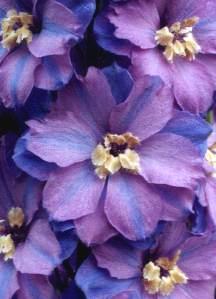 |
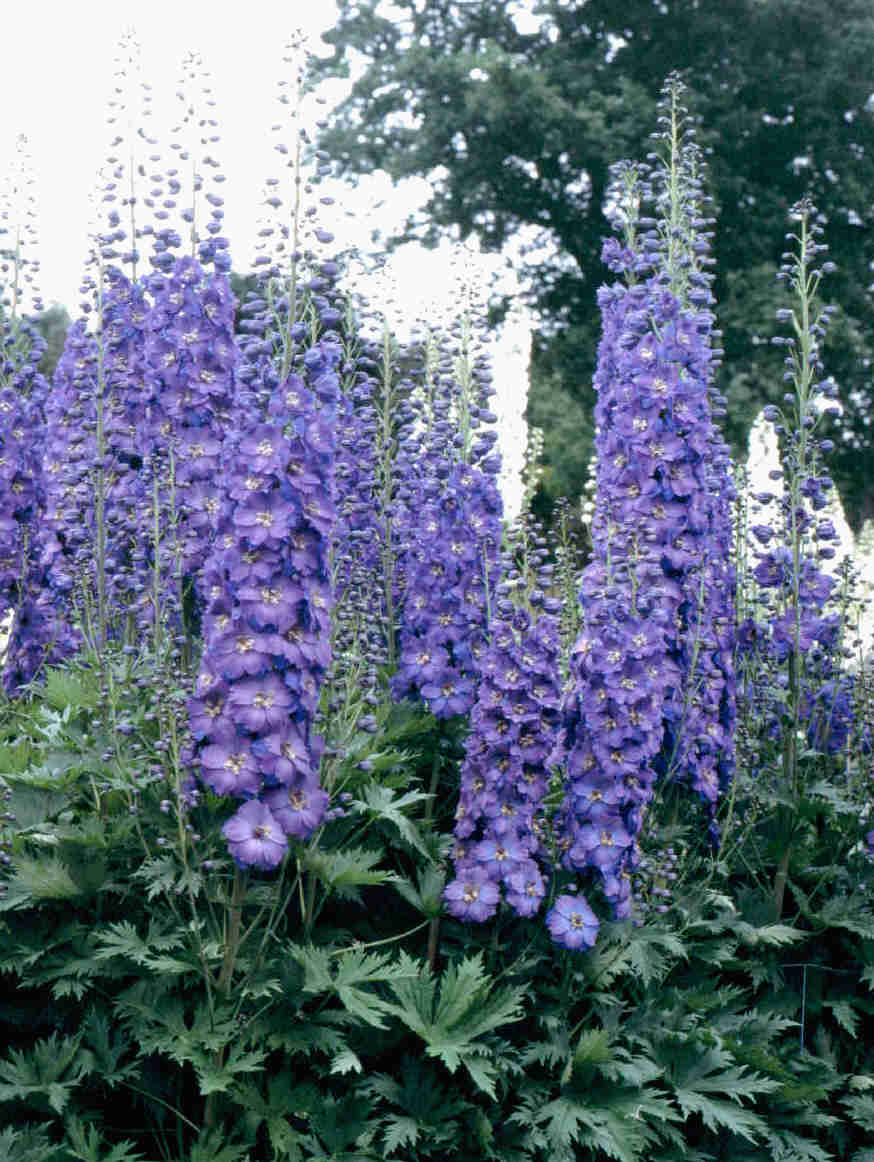 |
| 'Giotto' was selected
from seedlings raised in 1980 from 'Cassius' x 'Emily
Hawkins'. The name was chosen with the space probe
'Giotto' sent to explore Halley's comet in mind. The blooms are of similar form to those of 'Cassius' and can be very large. The growth habit is also like 'Cassius' in that the leafy part of the stem can sometimes be very short (0.5m) so that the plant is of medium height. When grown among other plants, the leafy stem is usually longer (0.8m). The flower colour is fascinatingly variable. The mauve flush of the front sepals is often brightened by a central stripe of bright blue, just as the flowers of 'Cassius' are a dull mauve in some seasons but bright gentian blue in other years. |
| Return to Variety List |
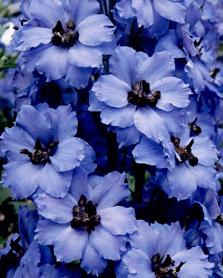 |
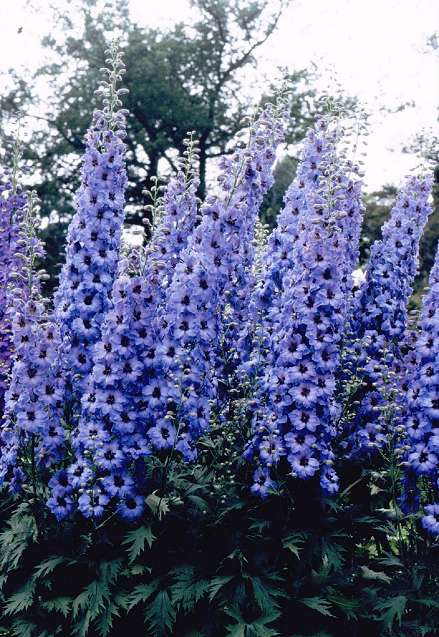 |
| 'Galileo' is named after a space probe
sent to explore the planets. It was raised from a cross
between white-flowered 'Lilian Bassett' and 'Loch
Lomond', a deep blue with a white eye. Both parents have
a rather short leafy stem below the bloom and it was
hoped that the seedlings from the cross would also have
this characteristic. Blue flowers were to be expected as
'Lilian Bassett' has a blue parent and white is a
recessive colour. The selected seedling later named 'Galileo' performed very reliably and for several years produced ten or more excellent blooms. The flowers were normally too late for the Delphinium Society Shows, but in 1995, a set of blooms from the plant won the first prize in the class for four spikes. Once again this resulted in a request for the variety to be included in the Wisley Trial of delphiniums, where the plants have grown very well. In 1998, the three plants produced an outstanding display with 40 or more blooms of high quality and 'Galileo' was awarded the Ogg Medal for the best display by any variety in the Trial. The colour of the flowers is somewhat dependent on the season. When the flowers first open, the blue is usually overlaid with a heavy mauve flush but this generally fades as the flowers mature. |
| Return to Variety List |
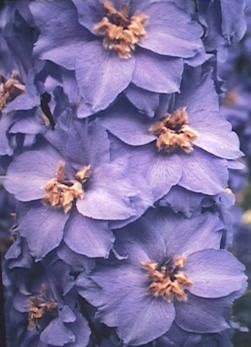 |
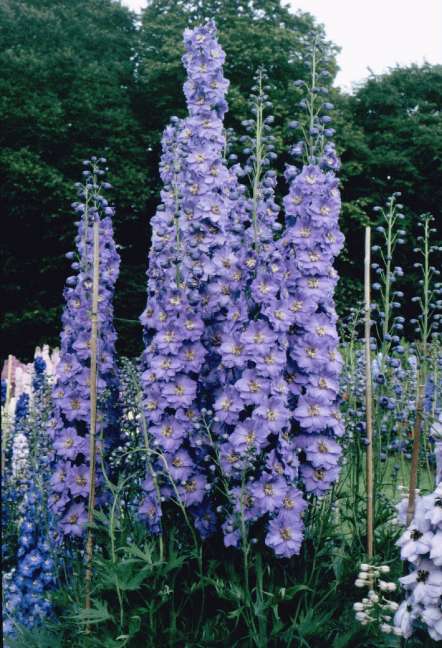 |
| 'Summerfield Viking' was selected from
among seedlings raised from 'Cassius' x 'Emily Hawkins'
and thus has the same parentage as 'Giotto'. The plant
habit is more like that of 'Emily Hawkins' than 'Cassius'
in that the leafy stem below the bloom is quite tall (0.8m).
The bloom is usually quite narrow and can be very long,
so plants may grow very tall (2.5m). The name 'Viking'
relates to a space mission but seemed appropriate in that
the plants are so strong and tall. The florets are large and flat with uniform light violet colouring. The most serious defect is that plants are rather susceptible to mildew. The eye normally contains small green bracts and the flowers rarely set any seed at all. |
| Return to Variety List |
| Return to Front cover |